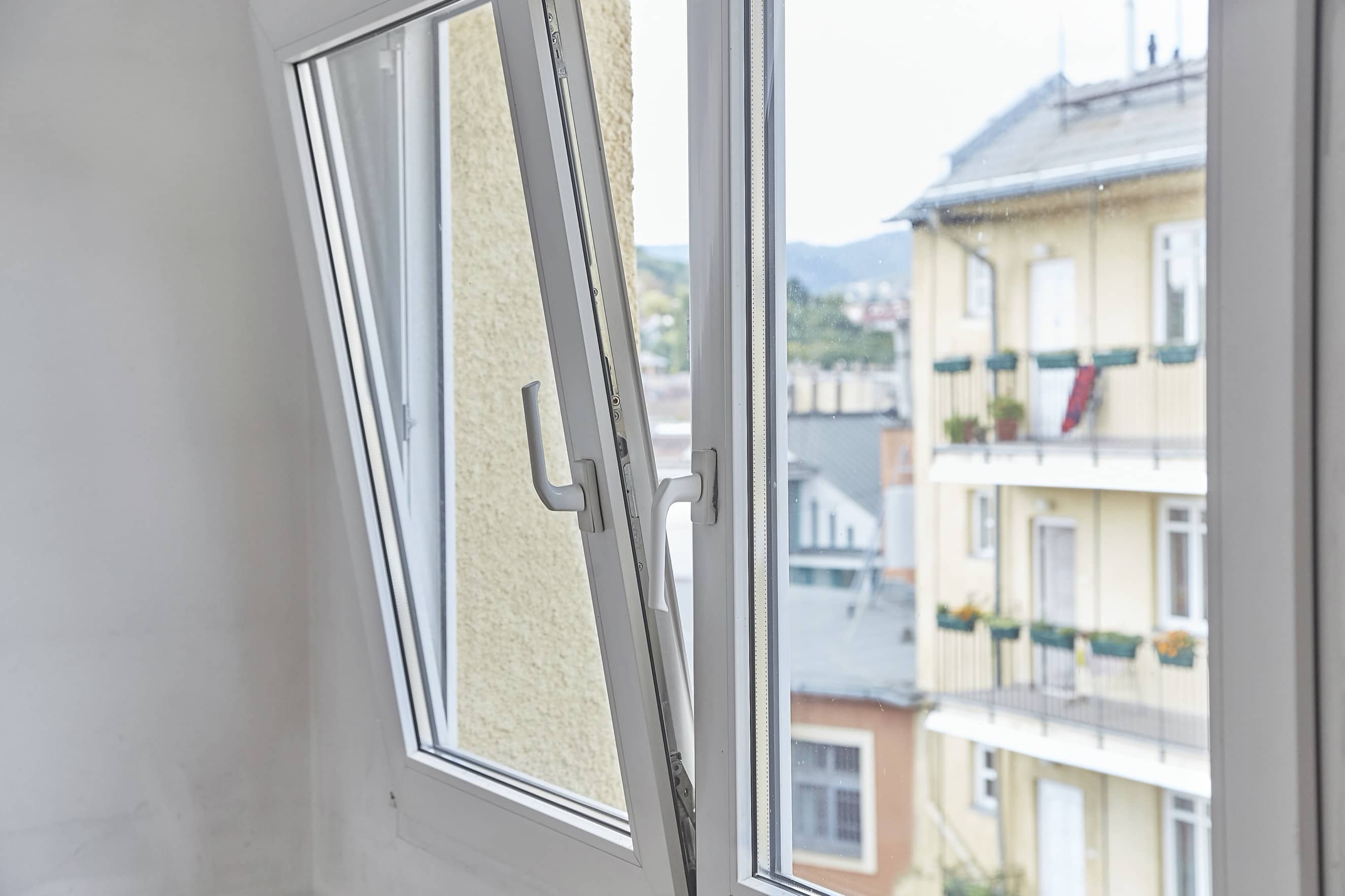
www.buildingsandcities.org/insights/commentaries/building-regulations-research.html
Overhaul the Building Regulations: The Role of Research

Challenges ahead: research has a role to protect the public interest and inhabitants
Susan Roaf (Heriot-Watt University) explains why the building regulatory system is not fit for purpose. Regulations fail to protect the safety, well-being and financial health of inhabitants from both regular occurrences and extreme events. Evidence from research about the safety and performance of buildings needs to form the basis for new regulations.
On 14 June 2017, a fire broke out in the 24-storey Grenfell Tower in London that burned for 60 hours, killed 72 people and injured 70 residents. Sir Michael Moore-Bick in his final report concluded that the fire resulted from decades of failure by UK central government and the construction industry to understand and act on the dangers of incorporating combustible materials into external walls of high-rise buildings. Building Regulations and the Approved Document B on fire had been poorly run without adequate oversight and inappropriate attitudes to the value of human life. The Building Research Establishment (BRE), which led national and international fire research was marred by unprofessional conduct from 1991 onwards with inadequate practices, poor testing, record keeping, reporting and a lack of scientific rigour. Moore-Bick questioned the independence and integrity of the industry and the priorities of research funding bodies supporting the construction industry players, highlighting many warnings to deaf ears.
The Grenfell fire showed clearly how the regulatory systems promoted industry interests over those of citizens (Roaf & Nicol 2022). Apparently not mendaciously, building standards, regulations and labelling schemes presented to politicians by regulators as instruments for reducing energy use and carbon emissions and improving safety routinely do the opposite, e.g. continuously ratchetting up emissions from buildings instead (Cass & Shove 2018). The glaring conflicts of interests in all aspects of building regulation seemed implausible until that Grenfell report (Moore-Bick et al. 2024). Fire is only one of the life-threatening dangers increasingly facing building occupants today, alongside more extreme weather events and pandemics.
Yet the UK's regulatory environment appears indifferent to some occupant safety concerns. For example, one potentially life-saving building feature, opening windows, has been largely written out of code requirements for modern buildings. Opening windows for either thermal cooling / ventilation or as emergency escape routes do not fit the regulators current ideal of "more efficient buildings" that must meet unnecessarily narrow thermal comfort zones (Humphreys et al. 2016) that require high levels of energy for mechanical installations to achieve.
Research imperatives
The IPCC Chair, Jim Skea, warned in October 2024 that the UN Paris Accord target of 1.5 oC is now officially exceeded and to stabilize Earth's temperature at 2.0 oC demands heroic action. 3.0 oC is now likely and Europe could face a shocking 5.0 oC by 2100 (Leake 2024). Radical new priorities for research into resilient buildings are vital, not least as insurance is being withdrawn from high-risk buildings like Grenfell (Financial Conduct Authority 2022).
Short Term Research must focus on preventing people from dying in buildings during extreme circumstances. Should all buildings, immediately, be mandated to have Emergency Natural Ventilation Systems (ENVS) as power grids and building mechanical systems increasingly fail during weather extremes? Many modern buildings have no opening windows despite clear evidence of their absence resulting in deaths, ill-health and injuries in extremis. For instance, in August 2005 a shocked world saw patients abandoned in hospitals during Hurricane Katrina. In October 2012 Hurricane Sandy flooded ground floors of Manhattan towers leaving residents without opening windows in increasingly putrid environments without power, ventilation or water. The New York's Urban Green Council subsequently recommend that residences have at least 25% operable windows (Roaf 2018). In July 2022 London temperatures soared to 37 oC crashing server rooms in Guy's and St Thomas' Trust hospitals disabling information systems for days (Campbell 2022), fortunately not for wards above without opening windows. In July and August 2023 power outages swept across the Sharjah city in the Gulf plunging residents into darkness and unbearable heat indoors (Asaba 2023). Some fled onto streets into temperatures above 45 oC. Lifts failed leaving the disabled marooned on upper floors with no opening windows. 45 oC may now occur by 2050 in the UK (Asser-Kennedy 2023). Even now opening windows can and do provide vital, affordable comfort cooling during heatwaves particularly during power outages.
During COVID-19 we learnt much about pathogen dispersal within hospitals via ducted systems (Roaf 2022). Deaths on wards plummeted with simple window opening regimes that purged spaces of the virus (Dancer et al. 2022). Should all hospital wards have operable windows to reduce hospital acquired infections fatalities (Roaf 2021)? By May 2020 15.8% of people in the UK who were being treated for COVID-19 had acquired it in hospital and over a quarter of those died from it. Thousands of medical staff died globally in the pandemic having been exposed to COVID in their hospitals (Read et al. 2021).
Are many large thin, tight-skinned buildings now stranded assets post-COVID? In June 2024 eleven out of sixteen prestige glass towers in London's Canary Wharf were either partially or fully vacant and seeking tenants. Hit by the working from home trends and soaring operational costs, are these offices with their often un-refurbishable floor plates becoming financial albatrosses for tenants and investors? (Chandler-Wilde 2023). Why and how are these buildings still pushed through the UK planning and regulatory systems? Research is urgently needed on the multiple roles and impacts of, and opportunities for opening windows in buildings to address worsening climate, future pandemics and the need to have genuinely, thermally safe, low energy buildings.
Medium Term Research must focus on the rapid evolution of climate-safe places, spaces and buildings while radically reducing energy use in them. The IPCC recommends moving away from regulations dominated by 20th century mechanical solutions towards enabling the design and refurbishment of energy sufficient buildings. Sufficiency concerns long-term actions driven by non-technological, low-energy, solutions (better buildings). In contrast, efficiency concerns continuous short-term marginal technological improvements that over the last three decades have made no dent on rising emissions (IPCC 2022). Sufficient buildings must provide enough room, security, usability and an adequate Level of Comfort to function well (Bierwirth & Thomas 2019). Will all fail-safe buildings in the future have to operate with mixed mode conditioning, being largely naturally ventilated, using mechanical heating and cooling only when needed? Is this the unstoppable direction of travel in cleaner cities for most buildings? What barriers from the incumbent construction interests and their friends in power need to be overcome to make that happen?
Conclusions
Grenfell provided two lessons: 1) buildings can kill, and 2) the construction industry is riddled with staggering levels of self-serving players, many of whom promote the vested interests of powerful forces to whom they are in thrall. This must change. Research to significantly de-risk buildings and protect their occupants from increasingly extreme weather, grid failures, fires and pandemics is urgently needed. A top priority is to explore the role of opening windows in the next generation of energy sufficient buildings to save lives, reduce energy use and slash carbon emissions from them.
Most urgent of all is the need for a root and branch review of the building regulatory and planning systems, their aims, structures, functioning, independence and effectiveness. Not only have these systems done little to date to reduce emissions from the built environment, but they have demonstrably not prioritised the safety, well-being and financial health of most ordinary citizens and businesses. Time for real change.
References
Asaba, B. (2023). Sharjah suffers widespread power outages. Middle East Utilities, 25 August. https://www.utilities-me.com/news/breaking-news-widespread-power-outages-reported-in-sharjah
Asser-Kennedy, A. (2023). It's hotting up: how much and how fast? Presentation to the Comfort at the Extremes Conference, Edinburgh. https://youtu.be/qW65k1GTk1Q
Bierwirth, A, & Thomas, S. (2019).Energy sufficiency in buildings: concept paper. European Council for an Energy Efficient Economy. www.energysufficiency.org
Campbell, D. (2022). London NHS trust cancels operations as IT system fails in heatwave. The Guardian, 21 July. https://www.theguardian.com/society/2022/jul/21/london-nhs-trust-cancels-operations-as-it-system-fails-in-heatwave
Cass, N. & Shove, E. (2018). Standards? Whose standards? Architectural Science Review, 61(5), pp. 272-279.
Chandler-Wilde, H. (2023). What to do with a 45-Story skyscraper and no tenants. Bloomberg. https://www.bloomberg.com/news/features/2023-08-29/hsbc-8-canary-wharf-tower-will-it-become-flats-how-can-qataris-upcycle-it
Dancer, S.J., Cormack, Loh, M. et al. (2022). Healthcare-acquired clusters of COVID-19 across multiple wards in a Scottish health board. Journal of Hospital Infection, 120, pp. 23-30.
Financial Conduct Authority. (2022). Report on insurance for multi-occupancy buildings. https://www.fca.org.uk/publication/corporate/report-insurance-multi-occupancy-buildings.pdf
Humphreys. M., Nicol, F. & Roaf, S. (2016). Adaptive Thermal Comfort: Foundations and Analysis, London: Earthscan/Routledge.
IPCC. (2022). Climate Change 2022: Mitigation of Climate Change. Contribution of Working Group III to the Sixth Assessment Report of the Intergovernmental Panel on Climate Change, P.R. Shukla, J. Skea, R. Slade et al. (eds.). Cambridge University Press. https://doi.org/10.1017/9781009157926
Leake, J. (2024). It's too late to save Britain from overheating, says UN climate chief. The Telegraph, 6 October. https://www.telegraph.co.uk/business/2024/10/06/too-late-save-britain-overheating-climate-chief-jim-skea/
Moore-Bick, M., Akbor, A. & Istephan, T. (2024). Grenfell Tower Inquiry: Phase 2 Report. https://www.gov.uk/government/publications/publication-of-the-grenfell-tower-inquiry-phase-2-report
Read J., Green C., Harrison E. et al. (2021). Hospital-acquired SARS-CoV-2 infection in the UK's first COVID-19 pandemic wave. The Lancet, 398 (10305), 1037-1038. https://doi.org/10.1016/S0140-6736(21)01786-4
Roaf, S. (2018). Thermal landscaping of buildings: climate-proofing design, in Activism in Architecture: The Bright Dreams of Passive Energy Design, Margot McDonald and Carolina Dayer (eds.). London: Taylor and Francis, pp.145-174.
Roaf, S. (2021). Building preparedness for pandemics: recommendations and summary for policy makers, in AMR and the Environment: A Global & One Health Security Issue, Garance F. Upham (ed.). Geneva: AMR Think Do Foundation. ISSN 2673-9232, pp.62-77.
Roaf S. (2022). COVID-19: Trust, windows and the psychology of resilience, in The Routledge Handbook of Resilient Thermal Comfort, F. Nicol, H. Bahadur Rijal and S. Roaf (eds.). London: Routledge, ISBN 9781032155975
Roaf S. & Nicol, F. (2022). Resilient comfort standards, in The Routledge Handbook of Resilient Thermal Comfort, F. Nicol, H. Bahadur Rijal and S. Roaf (eds.). London: Routledge, ISBN 9781032155975
Latest Peer-Reviewed Journal Content
A framework for 1.5°C-aligned GHG budgets in architecture
G Betti, I Spaar, D Bachmann, A Jerosch-Herold, E Kühner, R Yang, K Avhad & S Sinning
Net zero retrofit of the building stock [editorial]
D Godoy-Shimizu & P Steadman
Co-learning in living labs: nurturing civic agency and resilience
A Belfield
The importance of multi-roles and code-switching in living labs
H Noller & A Tarik
Researchers’ shifting roles in living labs for knowledge co-production
C-C Dobre & G Faldi
Increasing civic resilience in urban living labs: city authorities’ roles
E Alatalo, M Laine & M Kyrönviita
Co-curation as civic practice in community engagement
Z Li, M Sunikka-Blank, R Purohit & F Samuel
Preserving buildings: emission reductions from circular economy strategies in Austria
N Alaux, V Kulmer, J Vogel & A Passer
Urban living labs: relationality between institutions and local circularity
P Palo, M Adelfio, J Lundin & E Brandão
Living labs: epistemic modelling, temporariness and land value
J Clossick, T Khonsari & U Steven
Co-creating interventions to prevent mosquito-borne disease transmission in hospitals
O Sloan Wood, E Lupenza, D M Agnello, J B Knudsen, M Msellem, K L Schiøler & F Saleh
Circularity at the neighbourhood scale: co-creative living lab lessons
J Honsa, A Versele, T Van de Kerckhove & C Piccardo
Positive energy districts and energy communities: how living labs create value
E Malakhatka, O Shafqat, A Sandoff & L Thuvander
Built environment governance and professionalism: the end of laissez-faire (again)
S Foxell
Co-creating justice in housing energy transitions through energy living labs
D Ricci, C Leiwakabessy, S van Wieringen, P de Koning & T Konstantinou
HVAC characterisation of existing Canadian buildings for decarbonisation retrofit identification
J Adebisi & J J McArthur
Simulation and the building performance gap [editorial]
M Donn
Developing criteria for effective building-sector commitments in nationally determined contributions
P Graham, K McFarlane & M Taheri
Reimagining circularity: actions for optimising the use of existing buildings
R Lundgren, R Kyrö, S Toivonen & L Tähtinen
Effective interdisciplinary stakeholder engagement in net zero building design
S Vakeva-Baird, F Tahmasebi, JJ Williams & D Mumovic
Metrics for building component disassembly potential: a practical framework
H Järvelä, A Lehto, T Pirilä & M Kuittinen
The unfitness of dwellings: why spatial and conceptual boundaries matter
E Nisonen, D Milián Bernal & S Pelsmakers
Environmental variables and air quality: implications for planning and public health
H Itzhak-Ben-Shalom, T Saroglou, V Multanen, A Vanunu, A Karnieli, D Katoshevski, N Davidovitch & I A Meir
Exploring diverse drivers behind hybrid heating solutions
S Kilpeläinen, S Pelsmakers, R Castaño-Rosa & M-S Miettinen
Urban rooms and the expanded ecology of urban living labs
E Akbil & C Butterworth
Living with extreme heat: perceptions and experiences
L King & C Demski
A systemic decision-making model for energy retrofits
C Schünemann, M Dshemuchadse & S Scherbaum
Modelling site-specific outdoor temperature for buildings in urban environments
K Cebrat, J Narożny, M Baborska-Narożny & M Smektała
Understanding shading through home-use experience, measurement and modelling
M Baborska-Narożny, K Bandurski, & M Grudzińska
Building performance simulation for sensemaking in architectural pedagogy
M Bohm
Beyond the building: governance challenges in social housing retrofit
H Charles
Heat stress in social housing districts: tree cover–built form interaction
C Lopez-Ordoñez, E Garcia-Nevado, H Coch & M Morganti
An observational analysis of shade-related pedestrian activity
M Levenson, D Pearlmutter & O Aleksandrowicz
Learning to sail a building: a people-first approach to retrofit
B Bordass, R Pender, K Steele & A Graham
Market transformations: gas conversion as a blueprint for net zero retrofit
A Gillich
Resistance against zero-emission neighbourhood infrastructuring: key lessons from Norway
T Berker & R Woods
Megatrends and weak signals shaping future real estate
S Toivonen
A strategic niche management framework to scale deep energy retrofits
T H King & M Jemtrud
Generative AI: reconfiguring supervision and doctoral research
P Boyd & D Harding
Exploring interactions between shading and view using visual difference prediction
S Wasilewski & M Andersen
How urban green infrastructure contributes to carbon neutrality [briefing note]
R Hautamäki, L Kulmala, M Ariluoma & L Järvi
Implementing and operating net zero buildings in South Africa
R Terblanche, C May & J Steward
Quantifying inter-dwelling air exchanges during fan pressurisation tests
D Glew, F Thomas, D Miles-Shenton & J Parker
Western Asian and Northern African residential building stocks: archetype analysis
S Akin, A Eghbali, C Nwagwu & E Hertwich
Join Our Community

The most important part of any journal is our people – readers, authors, reviewers, editorial board members and editors. You are cordially invited to join our community by joining our mailing list. We send out occasional emails about the journal – calls for papers, special issues, events and more.
We will not share your email with third parties. Read more



Latest Commentaries
COP30 Report
Matti Kuittinen (Aalto University) reflects on his experience of attending the 2025 UN Conference of the Parties in Belém, Brazil. The roadmaps and commitments failed to deliver the objectives of the 2025 Paris Agreement. However, 2 countries - Japan and Senegal - announced they are creating roadmaps to decarbonise their buildings. An international group of government ministers put housing on the agenda - specifying the need for reduced carbon and energy use along with affordability, quality and climate resilience.
Building-Related Research: New Context, New Challenges
Raymond J. Cole (University of British Columbia) reflects on the key challenges raised in the 34 commissioned essays for Buildings & Cities 5th anniversary. Not only are key research issues identified, but the consequences of changing contexts for conducting research and tailoring its influence on society are highlighted as key areas of action.